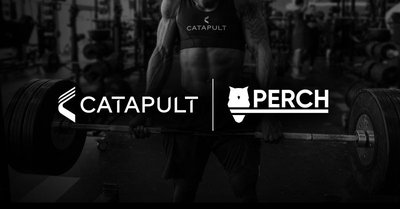TechNexus Venture Collaborative portfolio company Perch has been acquired by sports analytics giant Catapult (ASX: CAT) for $18 million.
Cambridge-based Perch makes strength training smarter, combining advanced computer vision and AI to deliver real-time, automatic tracking of athlete strength training. Its Perch Train product features a small 3D camera and computer vision to track everything that matters during a workout, including how fast you're lifting, your power output, and even the quality of each rep. No wearables, no manual data entry. Just mount it on a weight rack and it does the rest.
Over 40,000 athletes are already using Perch, from NCAA teams to professional organizations across the U.S. They've captured more than 25 million reps so far, building a massive dataset that keeps making their system smarter.
"Joining Catapult is an exciting next chapter," Perch co-founder and CEO Jacob Rothman said in a statement. "Together, we're creating a more complete picture of athlete development by connecting what happens in training with what happens on the field."
That connection is exactly what makes this acquisition so strategic. Catapult already dominates the on-field side with GPS tracking, video analysis, and tactical insights. But until now, they've been missing what happens in the weight room. That's where athletes actually build the foundation for performance.
For coaches, Perch solves a real problem. Instead of guessing whether an athlete is improving or trying to manually track progress, they get instant feedback and clear trends. The system fits seamlessly into existing workflows without disrupting training, which explains why it's spread so quickly through college and pro facilities.
TechNexus, an early investor in Perch, sees this as validation of our thesis around bridging physical and digital performance in sports. Perch’s additional venture investors include Teamworthy Ventures, Techstars, and SBXi.
Perch’s acquisition represents how sports technology is evolving beyond just tracking what happens during games. The future is about understanding the complete athlete journey, from the weight room to the field, and using that data to unlock human potential in ways we're just beginning to understand.
